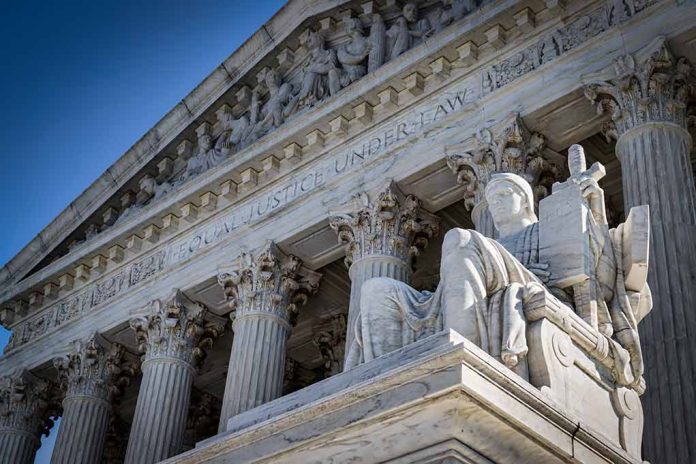
The Supreme Court’s decision to let stand a Minnesota court ruling against gun-carry permit age restrictions could redefine Second Amendment interpretations nationwide.
Key Takeaways
- The Supreme Court rejected an appeal from Minnesota to reinstate a ban on gun-carry permits for young adults, citing a violation of the Second Amendment.
- No justice dissented, highlighting the court’s consensus in maintaining the rights outlined in the Second Amendment.
- The Supreme Court avoided a broader exploration of Second Amendment rights, reflecting reluctance to expand gun rights discourse.
- The ruling suggests a shift towards more permissive interpretations of gun rights for young adults.
Supreme Court’s Inaction Signals Changes
The Supreme Court’s decision not to hear the appeal against Minnesota’s gun-carry permit age restrictions has substantial implications. This inaction effectively allows a lower court ruling to stand, which found Minnesota’s ban conflicted with the Second Amendment. The lower court, a federal appeals court in St. Louis, determined that the Second Amendment does not specify an age limit, thus barring the state from imposing one solely for young adults.
This comes amid broader judicial scrutiny over the age limits imposed on gun ownership and carrying rights. Such inquiries are significant as they could ultimately influence related laws across various states, potentially triggering a realignment in the national understanding of the Second Amendment. Notably, no justice dissented in this case, which could indicate a consensus on permitting greater access to firearms among younger adults within certain legal frameworks.
Implications for Future Legislation
The Supreme Court’s reluctance to engage deeply with this appeal might reflect a broader strategy of cautious intervention in gun rights expansions. Despite noticeable shifts in lower court rulings, particularly in regions like Louisiana, judicial inconsistency remains concerning age-based restrictions. These decisions have sparked debates among legislatures and advocacy groups, influencing subsequent legislative efforts related to firearms.
The situation in Minnesota shines a light on state-specific laws aimed at regulating firearms among young adults. The 2003 Minnesota law mirrored statutes existing in over 30 other states and the District of Columbia but didn’t withstand judicial scrutiny at the federal appeals level. As the national dialogue around gun legality and age-specific restrictions continues to evolve, various stakeholders remain vigilant about presenting cases that could prompt the Supreme Court to reconsider.
Our win in our Worth v. Jacobson challenge to Minnesota’s 18-20 carry ban has been cemented.
Fuck your gun bans! pic.twitter.com/knpNDcax2k
— Firearms Policy Coalition (@gunpolicy) April 21, 2025
Broad Challenges and Potential Outcomes
As legal analysts consider the broader implications of these judicial trends, many anticipate that challenges to similar state mandates may gain traction. This dynamic underscores an increasing complexity in balancing constitutional rights with public safety objectives. The evolving legal landscape suggests that a shift towards more permissive interpretations of the Second Amendment, specifically regarding age, may be underway. Consequently, states with restrictive gun laws may face future judicial reviews, possibly leading to substantial revisions of their regulatory frameworks.
As the nation observes these developments, it becomes evident that the judiciary’s stance and potential future rulings will play critical roles in guiding the discourse on gun rights across America.
Sources:
- Supreme Court won’t revive Minnesota ban on gun-carry permits for young adults | AP News
- Supreme Court declines to weigh gun ban on young adults in Minnesota
- Supreme Court rejects Minnesota effort to revive ban on young adults from carrying guns
- Supreme Court justices won’t revive a Minnesota ban on gun-carry permits for young adults – Washington Times







